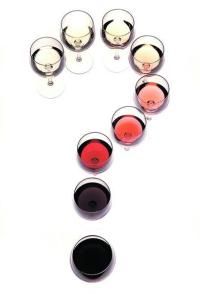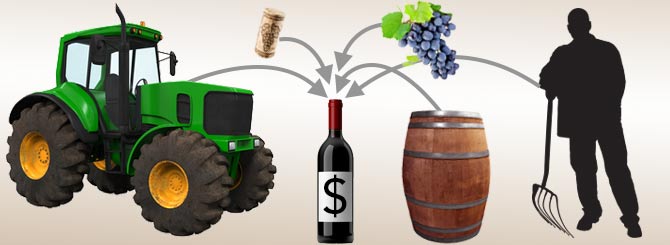I recently came across a conversation in the Wine Scholar Guild’s community section titled “Is it time to ditch wine scores?” The discussion was created by Justin Martindale, MW. He brought up the dialogue about wine score inflation.
This is not an old topic. In fact, back in 2013 Wine Spectator, James Laub wrote “Anyone who pays attention to wine ratings knows that critics are giving more 100-point scores than ever before. But are there really so many more “perfect” wines today than in the past?” According to Michel Thibaul by 2018, Robert Parker had given the prized 100 points to 525 wines. The article provides an intriguing breakdown of the regions and styles of wines that have received 100 points.
In 2020, James Suckling tasted almost 18,000 wines and gave 52 of them 100 points. In a video within the same article, James Suckling describes what makes a 100 point wine. He explained that although there is a technical aspect to the score; the amazing aromas, the harmonious structure and balance, or the very long finish. But he highlighted that it is also a wine that “touches your heart, you just feel it.” This is where the true subjectivity comes into play.

Wine Spectator declares the meaning to the following scores:
95-100; Classic: a great wine
90-94; Outstanding: a wine of superior character and style
85-89: Very good: a wine with special qualities
80-84; Good: a solid, well-made wine
75-79; Mediocre: a drinkable wine that may have minor flaws
50-74; Not recommended
While Wine Enthusiast ratings correlate to the following:
98-100 Classic – The Pinnacle of quality
94-97 Superb – A great achievement
90-93 Excellent – Highly recommended
87-89 Very Good – Often good value; well recommended
83-86 Good – Suitable for everyday consumption; often a good value
80-82 Acceptable – Can be employed in casual, less-critical circumstances
As you can see, there is already some discrepancy in the score a wine receives. If a wine receives a 90 in Wine Spectator it is outstanding, while it is Excellent in Wine Enthusiast. What exactly is the difference between Outstanding and Excellent? According to the Oxford Dictionary, they are synonyms. The distinction intensifies as the scores go down. Wine Enthusiast states that an 80 is acceptable while Wine Spectator claims that wine is good. Do these terms have the same subjective meaning to you? And finally, a mediocre or not recommended wine in Wine Spectator isn’t even on the scale for Wine Enthusiast; does that mean that Wine Enthusiast never assigns that score?

Historically, wine judging used a twenty point system (which Wine Enthusiast still is, they just bumped the scores to the higher 100 point as the ceiling vs 20.) The tasted wine received 3 points allocated to color, 7 points to aroma and 10 points to flavor/texture. The 100 point system was made popular by the infamous wine critic, Robert Parker, who gained his status as “the critic” when he assessed the 1982 Bordeaux vintage,

When you extrapolate the numbers, Robert Parker named on average 17 one-hundred point wines per year. The Wine Advocate gave 36 wine this prized number alone in 2023. Decanter gave the esteemed number to 23 wine across the globe. Is it true that the scores are being inflated as the years go by? Does a 95 point wine today equate to an 89 of yesteryear?
As James Suckling explained, it is a subjective factor that leads to the incredible 100 points. James Suckling, or any wine critic has a certain palate. There is the controversy of designing a wine for a critic’s palate. We all can name a winery or two whose scores improved when they chased a palate. But there in lies the question, what if their palate isn’t your palate? if you are not a fan of big extracted wines, than Robert Parker would not be the person you should follow, as he is known for liking that style.
On the opposite side of the coin, we have wine sites such as Cellar Tracker, Vivino and Wine Searcher, where everyday wine lovers leave their wine reviews, tasting notes and personal introspections on the wines they consume. Cellar Tracker, itself, has almost eight million user-generated reviews. They, of course have their own scoring system:
| Score | Grade | Meaning |
| 98-100 | A+ | Extraordinary |
| 94-97 | A | Outstanding |
| 90-93 | A- | Excellent |
| 86-89 | B+ | Very Good |
| 80-85 | B | Good |
| 70-79 | C | Below/Average |
| 50-69 | D | Avoid |
I feel the value in sites like these is found in the mass number of reviews. They allow you to gain insight into many palates, not just one person’s opinion. I feel that is the most important aspect. You need to find a palate that is similar to yours. Once you find an individual that seems to score wines similarly to how you would, now you found value in these systems; no matter what the scoring system used.
Should we move away from a point system all together? There are plenty of wine writers who don’t use points, but they typically use some sort of visual such as number of bottles colored in or stars; its human nature to need to see these. Marketing proves it. People buy wine when the shelf talker says it is highly rated. When they see a high score or a “Highly Rated” on the tag below the bottle, the bottle often ends up in the cart. How do you choose to try a new wine? What do you look for when picking out a new bottle? Who/what do you rely on to help with your decision?
~Slàinte!
I invite you to follow me on Instagram, Twitter, Facebook and Youtube for all things wine. I’ll never tell you what to drink, but I’ll always share what’s in my glass.
Please support our sponsor: Use code EXPLORE to receive 10% off your wine purchase.
Dracaena Wines has received consistent 90+ ratings and multiple Double Gold medals. Click image to order yours today and let Dracaena Wines Turn Your Moments into Great Memories!



